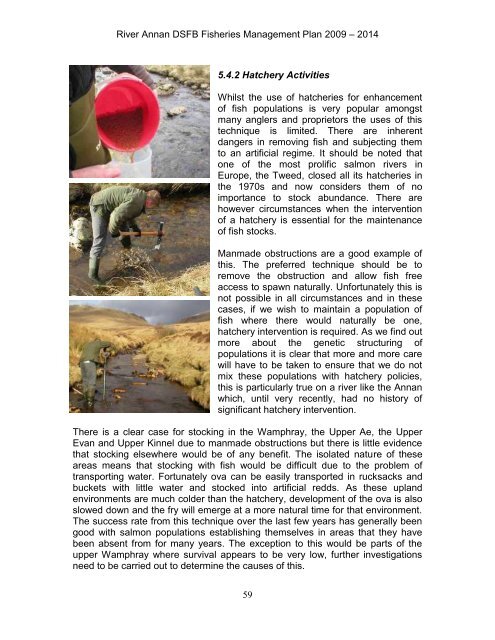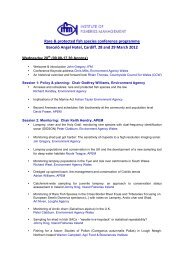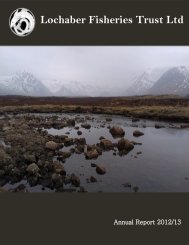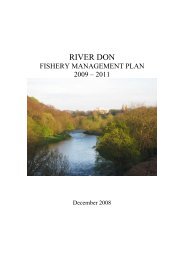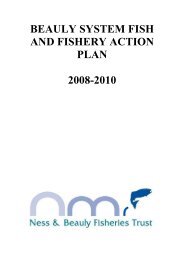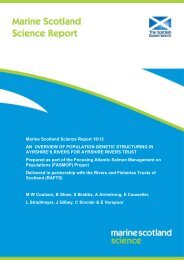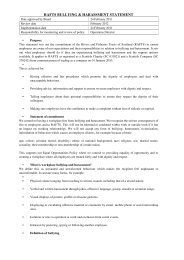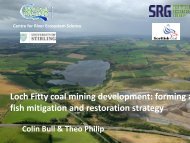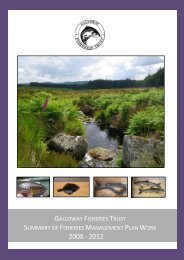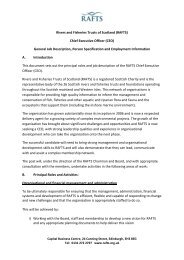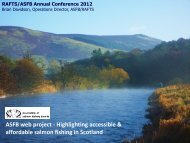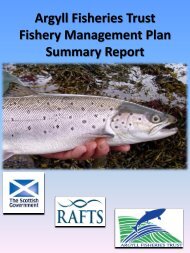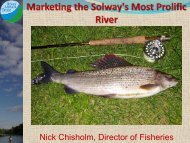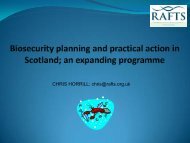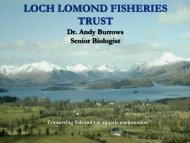Create successful ePaper yourself
Turn your PDF publications into a flip-book with our unique Google optimized e-Paper software.
River <strong>Annan</strong> DSFB Fisheries <strong>Management</strong> <strong>Plan</strong> 2009 – 20145.4.2 Hatchery ActivitiesWhilst the use of hatcheries for enhancementof fish populations is very popular amongstmany anglers and proprietors the uses of thistechnique is limited. There are inherentdangers in removing fish and subjecting themto an artificial regime. It should be noted thatone of the most prolific salmon rivers inEurope, the Tweed, closed all its hatcheries inthe 1970s and now considers them of noimportance to stock abundance. There arehowever circumstances when the interventionof a hatchery is essential for the maintenanceof fish stocks.Manmade obstructions are a good example ofthis. The preferred technique should be toremove the obstruction and allow fish freeaccess to spawn naturally. Unfortunately this isnot possible in all circumstances and in thesecases, if we wish to maintain a population offish where there would naturally be one,hatchery intervention is required. As we find outmore about the genetic structuring ofpopulations it is clear that more and more carewill have to be taken to ensure that we do notmix these populations with hatchery policies,this is particularly true on a river like the <strong>Annan</strong>which, until very recently, had no history ofsignificant hatchery intervention.There is a clear case for stocking in the Wamphray, the Upper Ae, the UpperEvan and Upper Kinnel due to manmade obstructions but there is little evidencethat stocking elsewhere would be of any benefit. The isolated nature of theseareas means that stocking with fish would be difficult due to the problem oftransporting water. Fortunately ova can be easily transported in rucksacks andbuckets with little water and stocked into artificial redds. As these uplandenvironments are much colder than the hatchery, development of the ova is alsoslowed down and the fry will emerge at a more natural time for that environment.The success rate from this technique over the last few years has generally beengood with salmon populations establishing themselves in areas that they havebeen absent from for many years. The exception to this would be parts of theupper Wamphray where survival appears to be very low, further investigationsneed to be carried out to determine the causes of this.59


